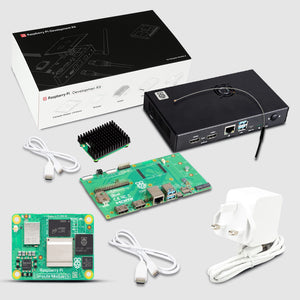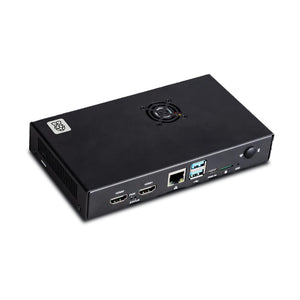Raspberry Pi Foundation created a revolution in the market among the people towards the technology. There are a lot of people who are using Raspberry Pi products in their projects, gadgets, and robots to make it more efficient. There are hobbyists, tech-enthusiasts, students, etc that love to work on Raspberry Pi to evolve the technology for a better future. Some people want to raise the features of their projects along with Raspberry Pi further for which they use HAT or Hardware Attached on Top. SB Components has a Research and Development division that develops advanced HAT for Raspberry Pi among which Power Monitor HAT is the newest arrival in the market. In this blog, we’ll look into the details of Power Monitor HAT to provide all the necessary information for the people.
Power Monitor HAT
As the name suggests, Power Monitor HAT allows the user to monitor current, voltage, or power in each channel. One of the things that Raspberry Pi users want to have is a device from which they can collect the value of current or voltage. SB Components look at the void of that product in the market for the users and developed Power Monitor HAT. Power Monitor HAT is a 3 Channel Current/Voltage/Power Monitor HAT For Raspberry Pi. Power Monitor HAT is designed for lightweight communication via the I2C or SMBus interface which makes an increment in the quality of the product. It does not only make the process easy of monitoring the current, voltage, or power in each channel but also makes things interesting for the users. One can also monitor the voltage between both sides of the sampling resistor that adds an important feature to it.

Specifications
- Operating voltage: 3.3V/5V
- Control interface: I2C/SMBus
- Sampling resistor: 0.1Ω 1%
- Voltage range: 0~26V DC
- Current range: ±3.2A
- Resolution: 0.8mA (±3.2A range) OR 0.1mA (±400mA range)
- Dimensions: 65mm × 30mm
Features
- It has the standard Raspberry Pi 40PIN GPIO extension header from which it can be stacked on Raspberry Pi easily. It supports all the variants of Raspberry Pi boards.
- Power Monitoring HAT comprises an Embedded ADC of 12 bits that convert the analog signal into a digital signal. Power monitoring HAT is developed to support multiple successive converting with the 0~26 DC voltage measuring range.
- There is a sampling resistor that is onboard, 0.1Ω 1% allows measuring bi-directional current up to 3.2A in the channel.
- It provides the monitoring on 3 channels. It performs the task via the I2C/SMBus interface that makes the process happen on the low bandwidth.
- It can directly calculate electrical quantities like power, voltage, and current. Power Monitoring HAT measures output power value through an additional multiply register that helps the user to get the right readings.
- Power Monitor HAT consists of I2C control pins for connecting with other host boards to perform the task as per the requirement.
Steps to install Power Monitor HAT
These are the following ways that one can follow to install and run Power Monitor HAT
- First enable I2C interface by running "sudo raspi-config" command then select interfacing options >> I2C >> click on enter to enable it.
-
You can also use GUI to enable i2c, click on Menu > Preferences > Raspberry Pi Configuration > interfaces, Then enable I2C

- Open Terminal and install dependency required to run power monitoring HAT. sudo pip3 install adafruit-circuitpython-ina219
- Now Clone repository and run example code.
git clone https://github.com/sbcshop/Power-Monitor-HAT.git
cd Power-Monitor-HAT
cd RaspberryPi
python3 demo.py







